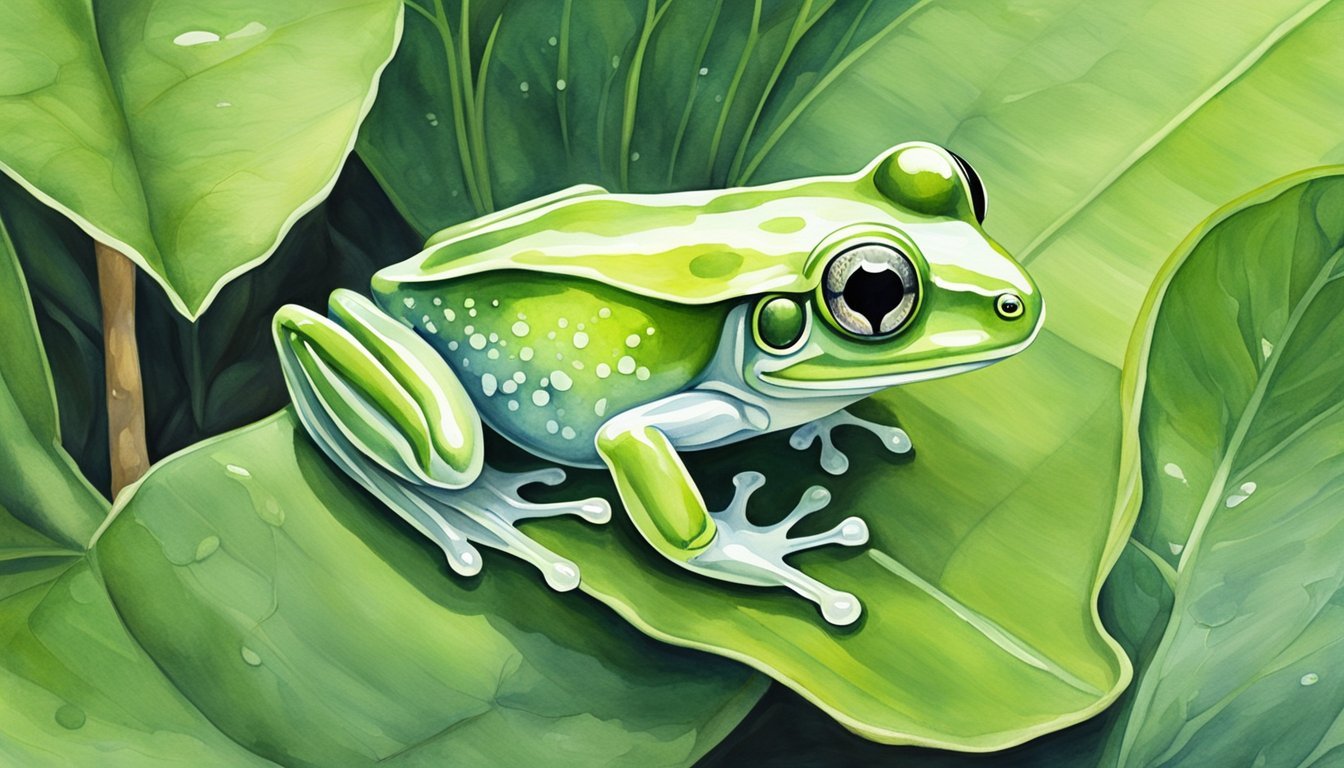Discovering Glass Frogs
Glass frogs are remarkable for their unique adaptations that include translucent skin which allows a view of their internal organs. These small, green amphibians possess extraordinary camouflage abilities that have fascinated scientists and nature enthusiasts alike.
Physical Characteristics
The defining feature of a glass frog is its see-through skin, particularly on the undersides, making the frogs’ organs visible from beneath. They typically have a small size, about that of a marshmallow, and sport yellow spots along their green bodies. The translucence of their skin coupled with the ability to conceal their red blood cells within their liver contributes to their ability to blend into their surroundings.
Behavior and Lifestyle
Glass frogs are primarily nocturnal creatures. Their behavior and lifestyle are centered around their ability to camouflage, which is crucial for both predation and protection. During the day, they rest on the undersides of leaves, their transparent bodies making them nearly invisible to predators. At night, they become active, feeding on insects and other small invertebrates.
Habitat and Distribution
The habitat of glass frogs is usually tied closely to streams or rivers in tropical rainforests. They are primarily found in Central and South America. These amphibians require a moist environment due to their skin’s permeability which can easily lead to dehydration. Preservation of their natural habitat is essential for their survival, as they are sensitive to environmental changes.
Ecology and Reproduction

The glass frog’s unique reproductive strategies and ecological habits are pivotal for its survival in the rainforests of Central and South America. Understanding the interaction between these amphibians and their environment sheds light on their life cycle and the challenges they face.
Mating and Life Cycle
Glass frogs exhibit a remarkable reproductive process, often involving nocturnal, territorial males calling to attract females. Females select a mate and together they engage in axillary amplexus, where the male clasps the female to fertilize externally laid eggs. Clutch size can vary, but a female typically lays her eggs on the undersides of leaves or branches overhanging streams. This placement is strategic as tadpoles drop into the water upon hatching, where they continue their development until metamorphosis into frogs. Researchers have noted that glass frogs are active mainly at night and usually spend daylight hours sleeping, camouflaged against the foliage.
Mating behaviors observed among different species can vary, with certain adaptations that suit their environments across regions from Panama to Mexico and Ecuador to Colombia.
Diet and Predation
Glass frogs are generally insectivorous, with their diet contributing to their role as a key species in the rainforest ecosystems of Central and South America. These frogs help control insect populations. The specifics of their diet, however, remain understudied. As for predators, glass frogs are preyed upon by birds, mammals, and larger reptiles. Their nocturnal and arboreal lifestyle provides some protection, and the transparent quality of their skin offers camouflage among the leaves and trees where they reside.
A study on the diet and feeding ecology of glass frogs suggests that their eating habits are integral to understanding their role in the environment, though more comprehensive research is needed.
Conservation and Study
The conservation status of glass frogs differs by species and region. Some species face higher risks due to habitat destruction and pollution. Focusing on their conservation involves studying their breeding habits and environments. Unique features such as the presence of green bones and blood cells with reduced clotting abilities have drawn the attention of researchers from institutions like Duke University and the American Museum of Natural History. Their studies contribute to a growing body of knowledge essential for developing effective conservation strategies.
Information regarding these amphibians’ conservation and scientific studies emphasize the necessity to preserve diverse and often diminishing habitats, to ensure the survival of various glass frog species.

